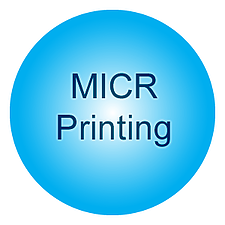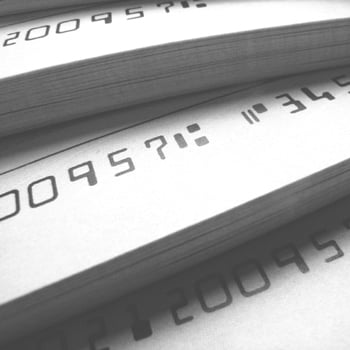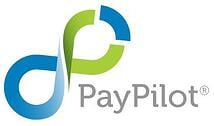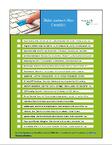
Technology today is an ever-changing phenomenon. The latest upgrade or version of “X” makes previous versions of “X” obsolete in a matter of months. It’s remarkable that something created in the mid 1950s is as relevant today as it was the day its creators unveiled it. Magnetic Ink Character Recognition or MICR coding changed the way we processed checks since its inception and how we perform MICR check writing and MICR check printing today.

Financial institutions around the world have used the MICR line coding – the numbers across the bottom of a paper check – for over 60 years and is one technological breakthrough that can boast about its original version: there’s never been an older or newer version of the MICR line.

The United States population reached 150 million in the 1950s and the economy was booming. This led to more check writing, and at the time, people processed the checks by hand. This led the founder of Bank of America and visionary, A.P. Giannini, to partner with the Stanford Research Institute to solve the problem of processing checks manually. In September 1955, the alliance presented ERMA (Electronic Recording Machine, Accounting), which could process checks in record numbers and in a fraction of the time.
Shortly after that, Bank of America, General Electric and the Stanford Research Institute introduced the MICR line code and made it available to all financial institutions and check printers without royalty fees. In 1956, the American Banking Association (ABA) adopted the MICR code line as standard and it remains the standard worldwide.
Check writing software allows users to write checks and print them using any printer with magnetic ink, which is widely available. MICR coding is a timeless and convenient innovation. Can you imagine an ERMA or subsequent NCR MICR encoding machine, which took up the space of a small car, fitting nicely on your desk or in your workstation?

Today, checks are still as critical an instrument of payment as it was at the time of the creation of MICR coding. However, savvy companies know that enormous opportunities are available to transact more efficiently by migrating from paper checks to electronic forms of payments. Prelude's PayPilot disbursement hub solution supports all of these options. Whether it is MICR check writing / MICR check printing or electronic payments, PayPilot can handle all of your complex requirements; e.g.
- printing digital signatures
- printing companiy logo
- custom memo line notes
- bulk payments
- electronic approval process
- diverse layouts and formats
- explanation of payment and overflow remittance processing
- converting to electroinc payments
- Positive Pay
- Bank Reconciliation
- OFAC scrubbing
Prelude Software is a leading provider of a disbursement hub solutuon that enables businesses to have multiple payment method options such as MICR Check, ACH, Cards, Virtual Cards (SUA) or alias payments (tokenized payments) using email addresses and cell numbers as tokens or the key identifier.
Allow us to learn more about your particular requirements and share how Prelude can help you too.



